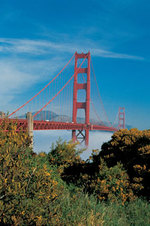 I am just back from the International Studies Association annual convention in San Francisco. The theme of the conference was ‘Bridging Multiple Divides’ – divides between academics, policymakers and activists, and divides within academia between different theoretical and methodological approaches to studying international politics. Of the 4,000+ presentations on offer, for me one of the more entertaining panels challenged the idea that bridging divides is necessarily a good thing. This struck a chord: at a convention a few years back I recall an ISA president calling for academics to speak with ‘one voice’ to policymakers, since that would make things easier for government.
I am just back from the International Studies Association annual convention in San Francisco. The theme of the conference was ‘Bridging Multiple Divides’ – divides between academics, policymakers and activists, and divides within academia between different theoretical and methodological approaches to studying international politics. Of the 4,000+ presentations on offer, for me one of the more entertaining panels challenged the idea that bridging divides is necessarily a good thing. This struck a chord: at a convention a few years back I recall an ISA president calling for academics to speak with ‘one voice’ to policymakers, since that would make things easier for government.
The ‘Why Bridge It?’ panel, organised by the LSE’s Millennium: Journal of International Studies, challenged ISA’s notion that divides should or could be reconciled. They did so simply by examining what bridges are. This might seem incredibly flippant. Building bridges signals humankind’s mastery of nature, argued Douglas Bulloch, and in films like A Bridge Too Far or Bridge Over the River Kwai, our hubris. Bridges signal conflict too: to destroy a bridge appears hugely symbolic in the case of Mostar during the 1990s Balkans conflicts or the al-Sarafiya Bridge in Baghdad more recently. Bridges are a site of battle, noted Henry Radice, where the loser is thrown off the side, or a point of restricted passage if a bridge is gated or guarded. To those deliberately on marginal islands, bridge-building connects them to the mainstream or mainland, perhaps against their wish to be undisturbed. A bridged divide is no longer a divide. Bridges may have utility, but they do violence! Does ISA’s inclusiveness signal violence?
But if we examine the so-called marginal voices in international studies – the post-structuralists, post-modernists and critical theorists – they are as well-represented as the mainstream; they are mainstream now. The truly marginal wouldn’t be at ISA in the first place. Felix Berenskoetter suggested that those at the margin take a position of superiority, the self-appointed cutting edge, closer to a higher truth. They do not need a bridge built to them or to build bridges themselves. They sit under a bridge and leap out to attack the traffic now and again.
Forgive a final stretch of metaphor. There is only land and water, for Heidegger, two substances. A bridge assumes a space between islands, but we focus on how the bridge transforms how we think of the islands (Oliver Kessler and Robert Kissack). There are images of bridges on Euro banknotes to represent communication between the peoples of members states and to suggest a coming-together of identity. But what is the in-between? What is in the divide? Who or what is the water? Politics? At this point, Robert’s opening comment that the Golden Gate Bridge is the most popular suicide destination in the world began to hit home.
